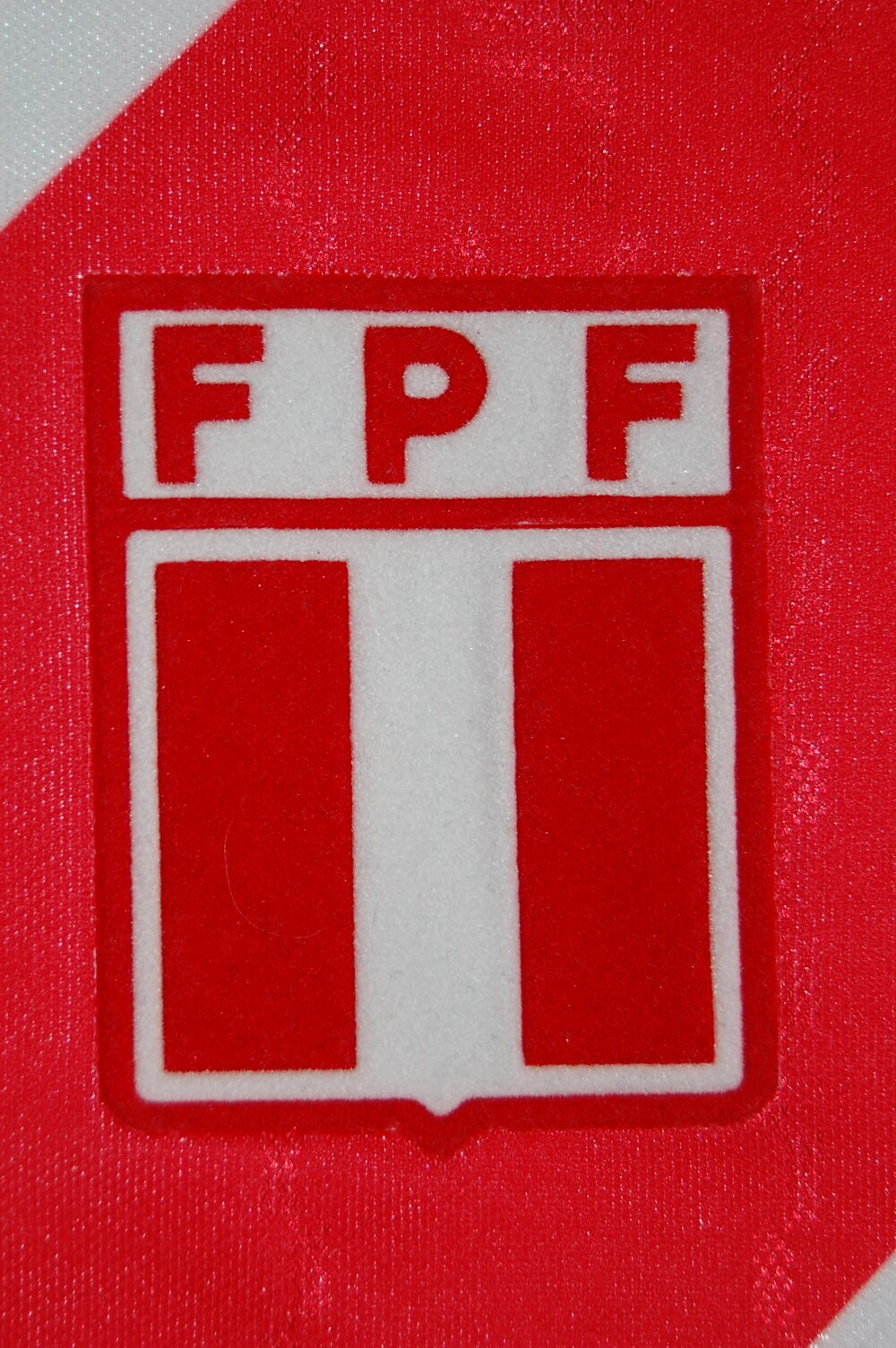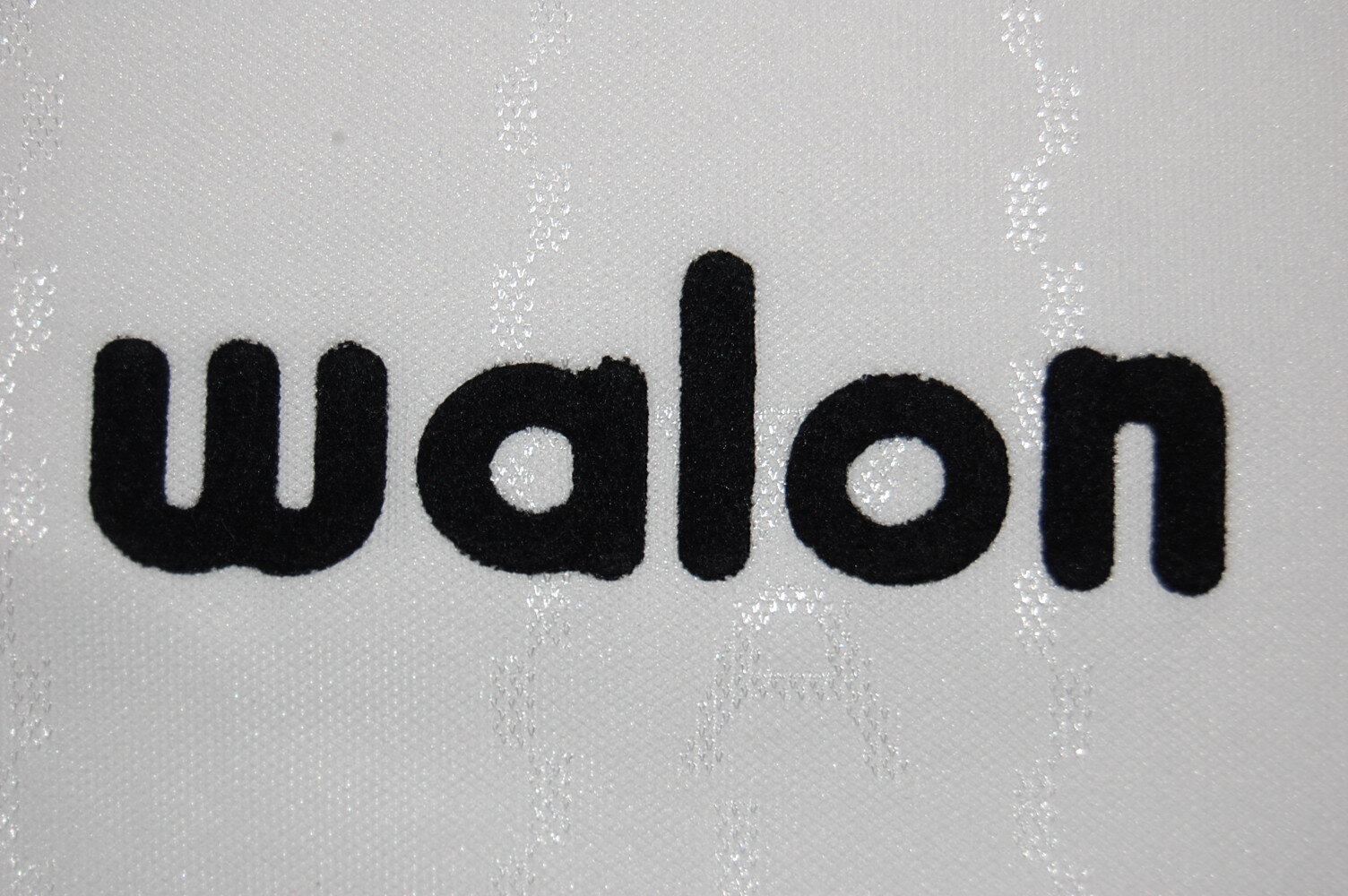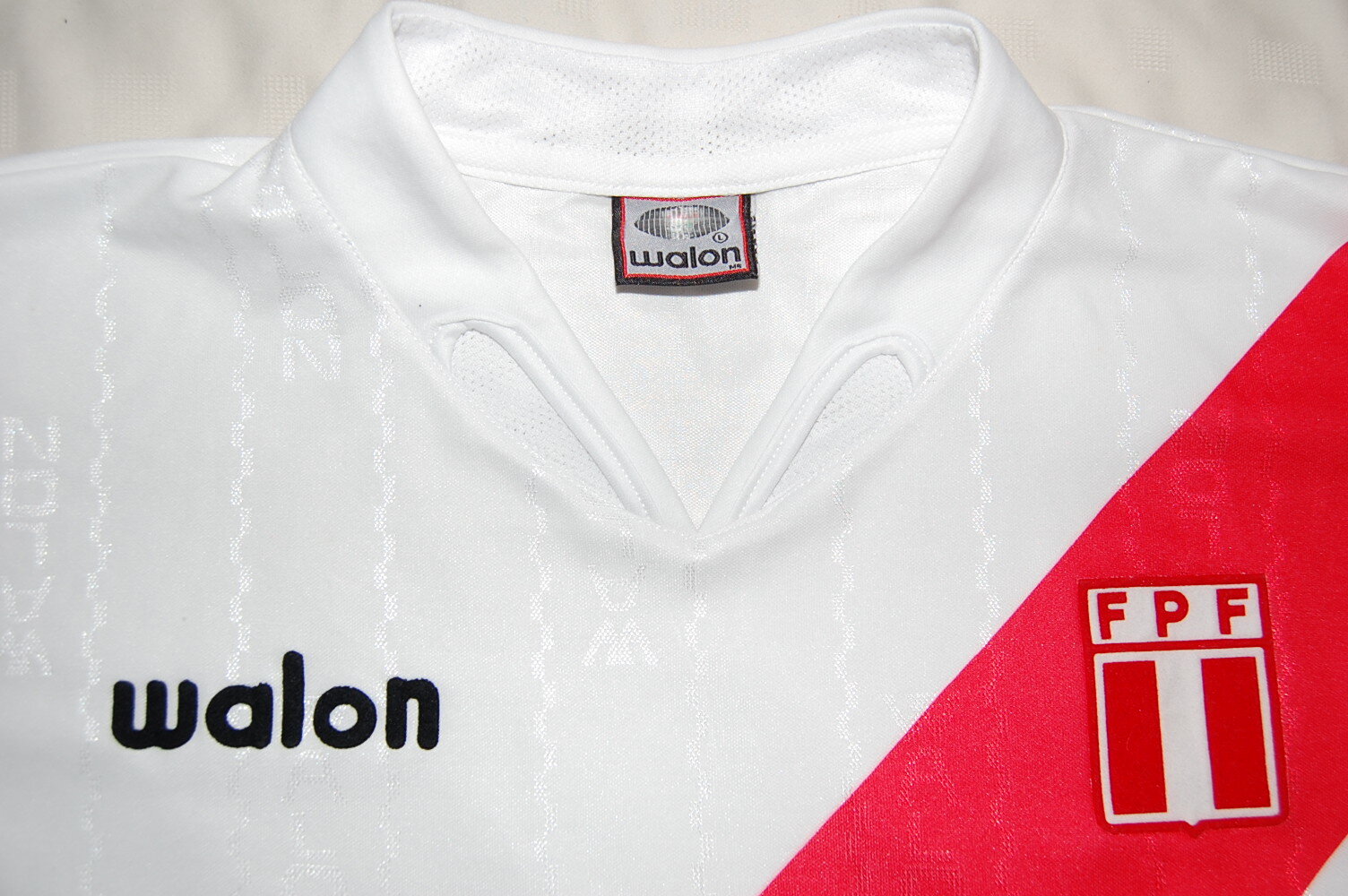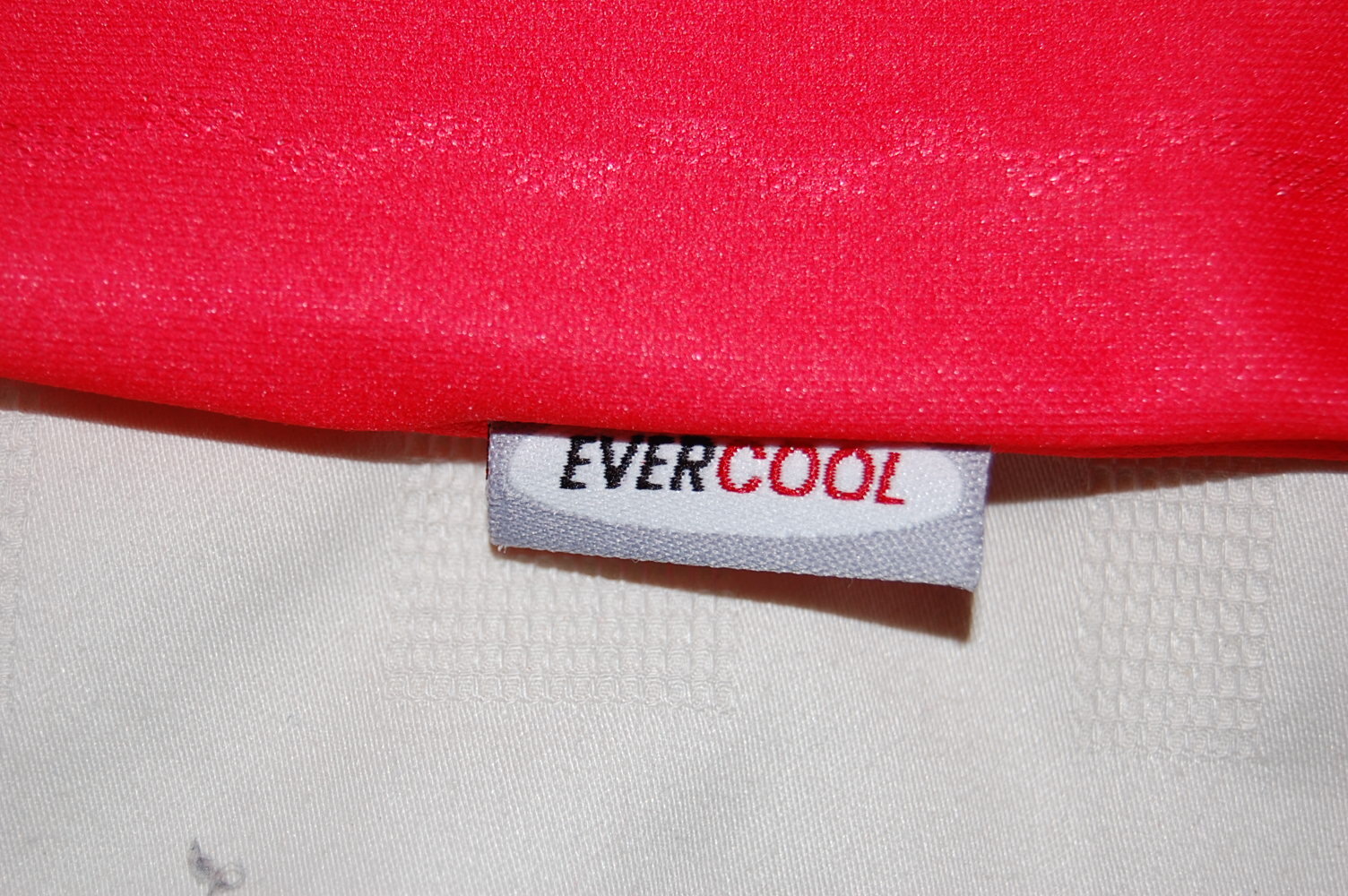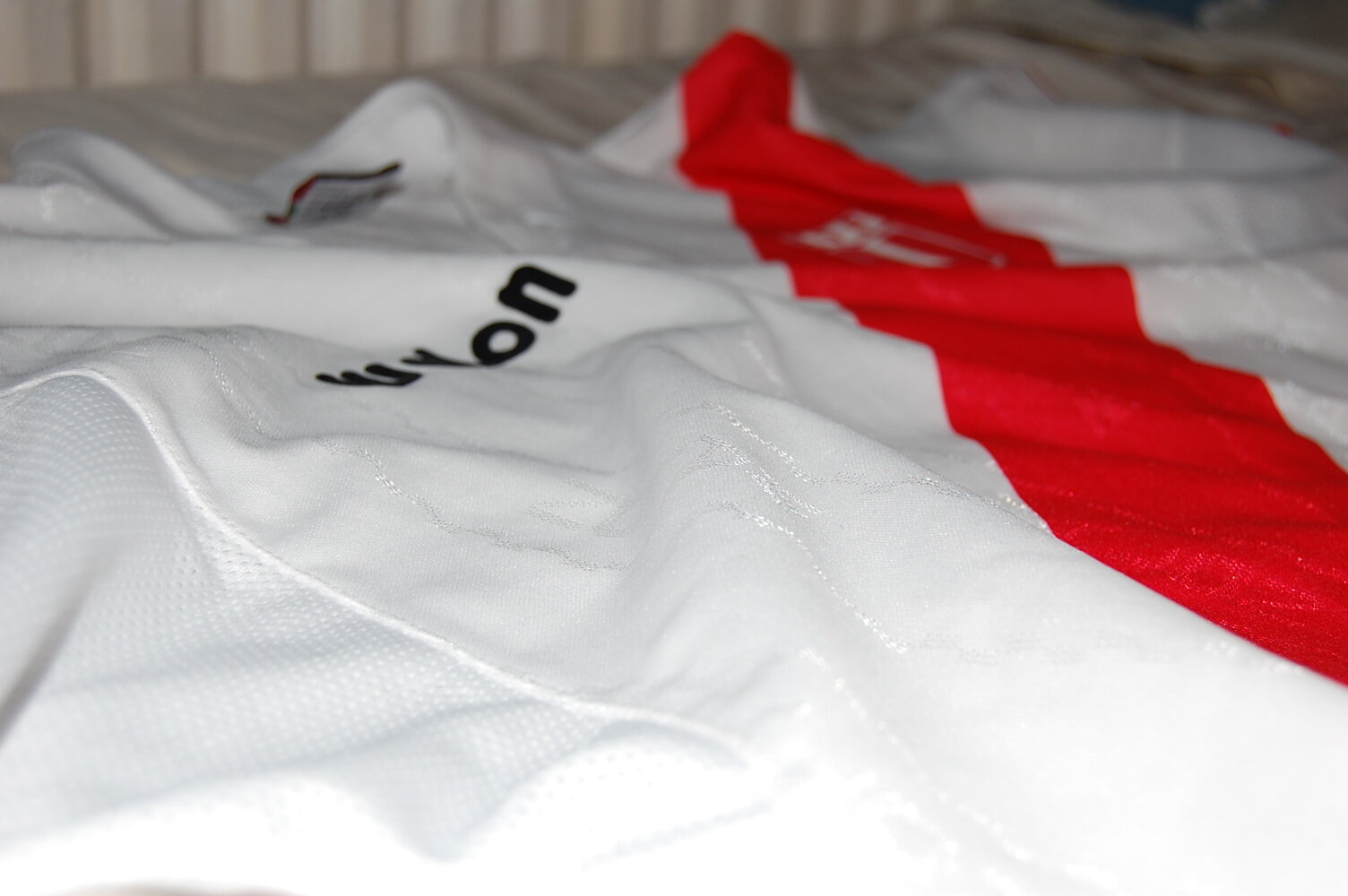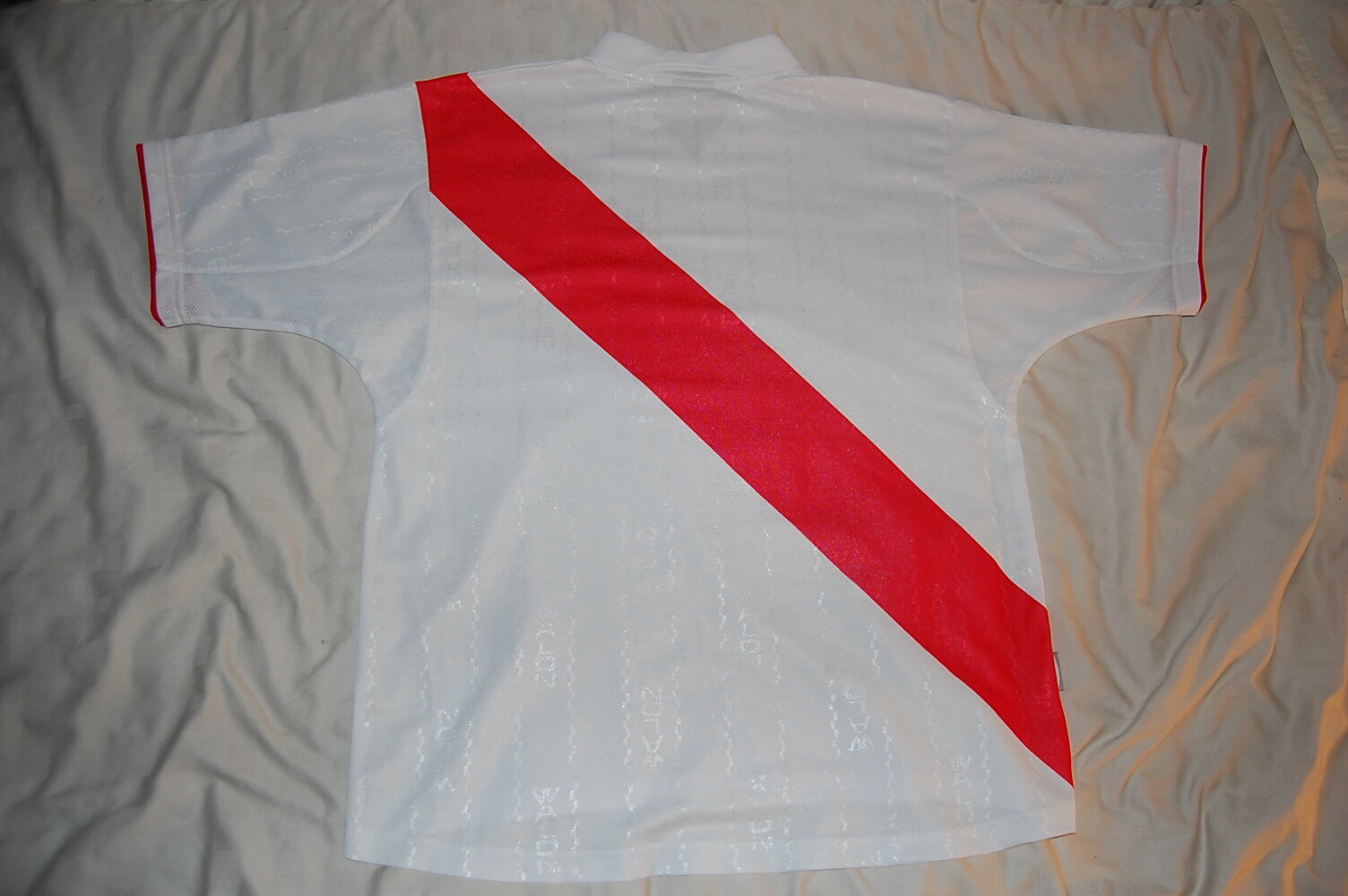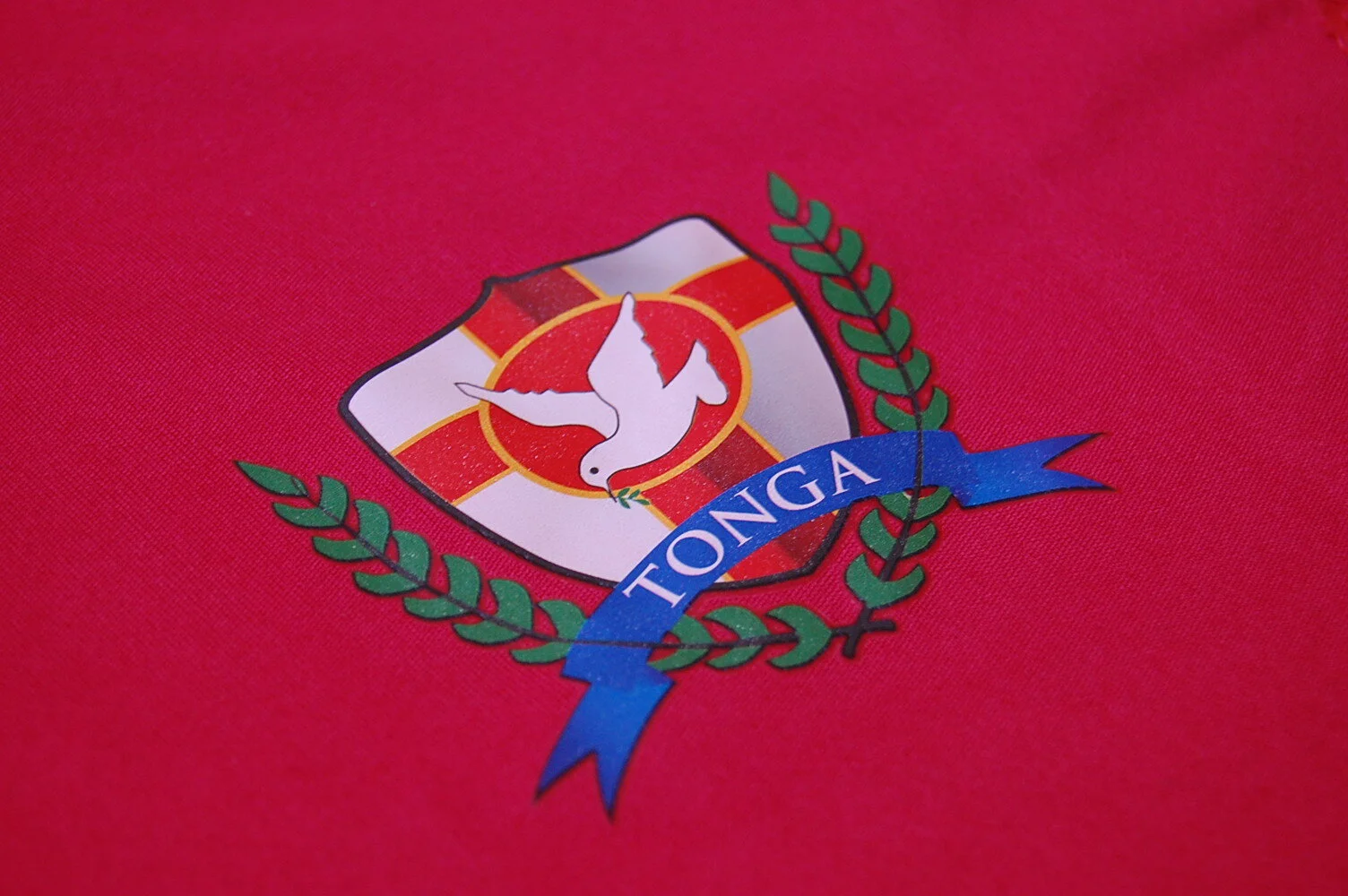Peru
Home; 2004/06
Peru is one of those nations that is held in high regard by lovers of football kit design. At its traditional best, the shirt is a crisp white top with a red sash from shoulder to hip. This gives Peru an instantly recognisable shirt, distinct from anything else worn by other national teams. Peru also has to be in any discussion on the best, or perhaps most iconic, national football shirts of all time. Their 1978 kit is held by many to be a high water-mark in shirt design. It maintained the traditional look, but blended it with the modern introduction of manufacturer logo and the famous Adidas three strips running down the sleeves. Truly timeless.
The shirt I present here was a return to the simplicity of the plain sash on all white after some years of tinkering with the design. It has to be said that it is a little dated by the fabric-weave watermark, the baggy cut and the collar which Walon ripped off straight from Adidas’ 2002 range. Walon actually supplied two different versions of this shirt during its lifetime of use by the senior team, something that was not particularly uncommon with South American manufacturers around this time. There is the one I have here, but also a version with a ‘78-esque floppy collar which looked particularly good in long sleeve. I cannot understand why they did not just use this for all batches instead of the Adidas collar. Not only was there two versions of this shirt, but there was at least some games played where the material was different in the player shirt. The waffle-type material can be seen in this poor resolution picture. But this was not simply player spec versus replica, as Peru definitely wore the same material and shadow print on the field as in the shirt I have. There was also a difference in the logos, with this version using a raised felt material for the crest and Walon logo, while the other version was stitched in both cases.
If the 70s decade was a high point in their kit design, it was also the same on the pitch. A Copa America title in 1975 was sandwiched between two World Cup qualifications, as well as getting to the to the semi finals of the next Copa America as defending champions. It remains the most successful period in the team’s history. That ‘75 Copa America title was their last to-date, and while they did make the ‘82 World Cup, it would be 2018 before they again were seen on the world stage. Perhaps that successful streak also elevates the Peruvian kits of the 70s in the minds of many.
Two games in Peru’s history have gone down in infamy. At the 1938 Olympics in Berlin, Peru overcame Finland 7-3 in the first round to set up a quarter-final tie with Austria. They came from two goals down to draw with Austria and bring the game to extra-time. Peru would have the ball in the net five times in the injury time, but three goals were ruled out by the referee. The game finished 4-2 to Peru, and a crowd invasion followed. Austrian officials would launch a protest, saying that the fans were Peruvian and put the Austrian players at risk. Peru countered saying that the crowd-invasion was created by the Nazi officers to ensure Austria had a chance at a re-match. Peru refused to play the re-match, and supported by other South American nations, both Peru and Colombia withdrew their full delegations from the Games and returned home.
Just over forty years after that event, Peru would find themselves at the centre of more suspicious interfering in a game. This time however, they would be seen as throwing a game against hosts Argentina at the 1978 World Cup, to ensure the Argentines would advance. Going into the final round of the second group phase games, Argentina were to play Peru in the evening after Brazil had beaten Poland 3-1 earlier in the day. This meant that Argentina knew a 4-0 win would put them through. These days, final group games kick off at the same time to limit teams knowing the score they need. Argentina won 6-0. Many at the time smelt a fix, and years later a Peruvian senator would claim that an agreement reached between the two respective dictatorships of the day relating to trade and prisoner releases ensured Argentina would get the result they needed.
